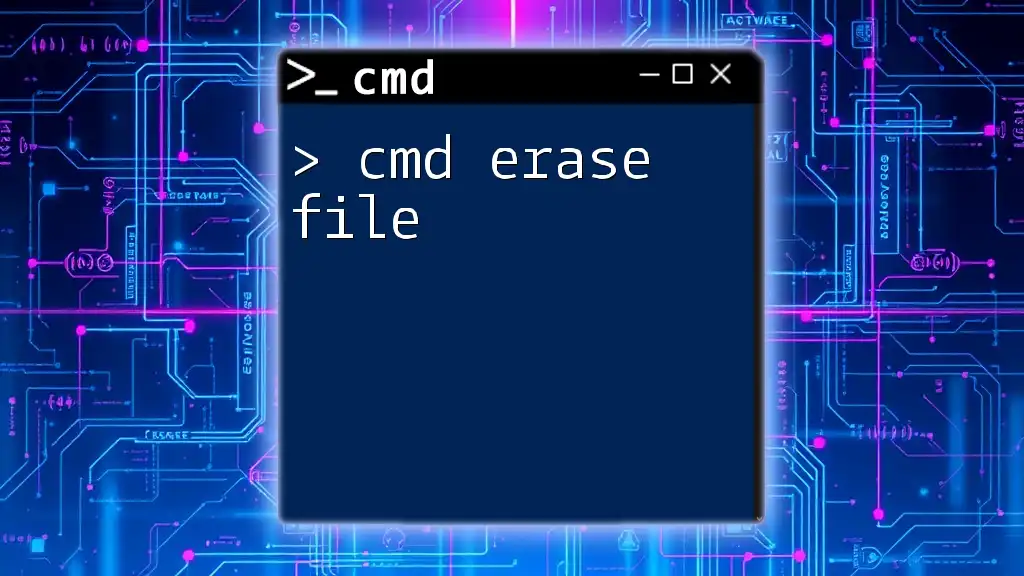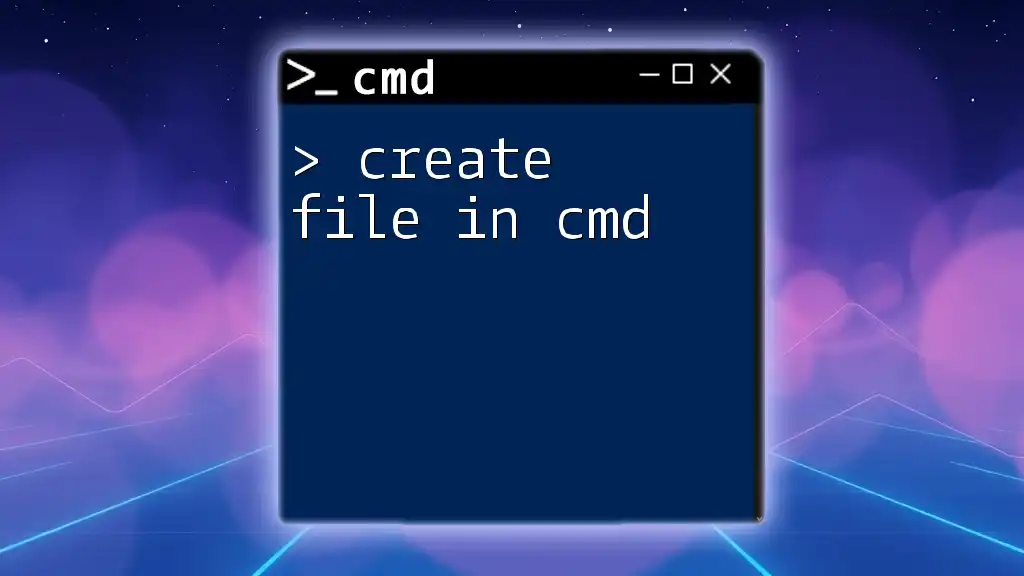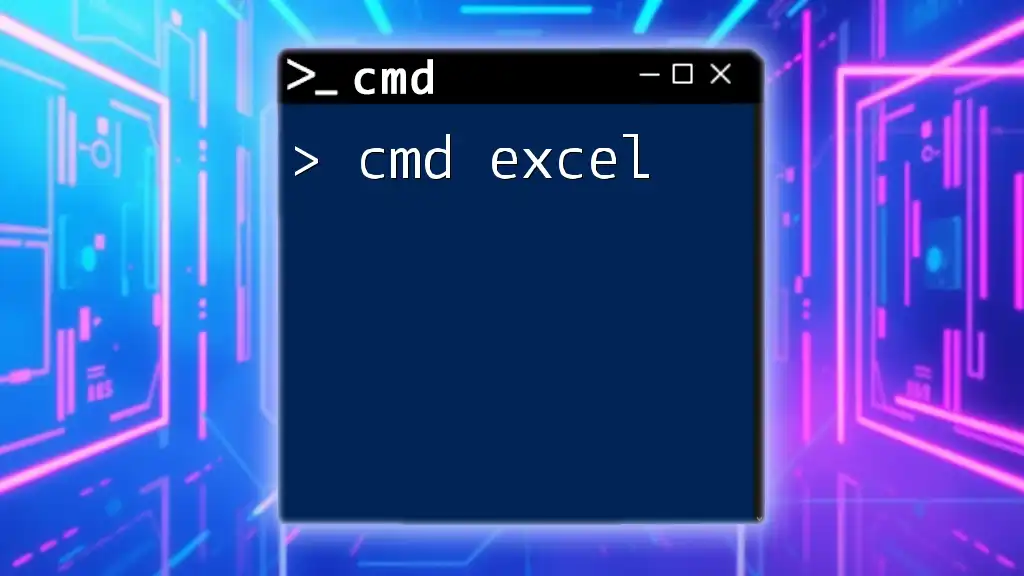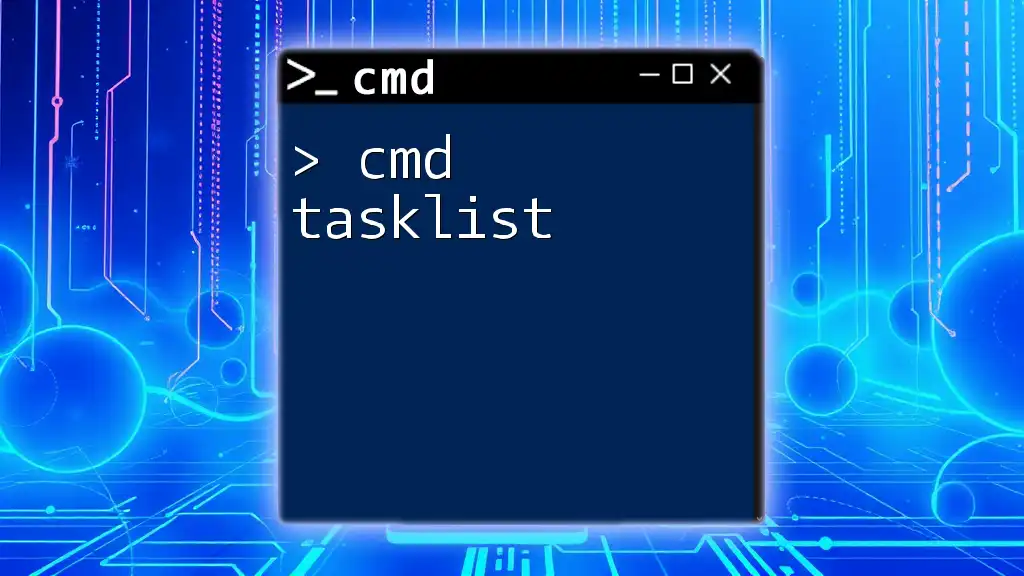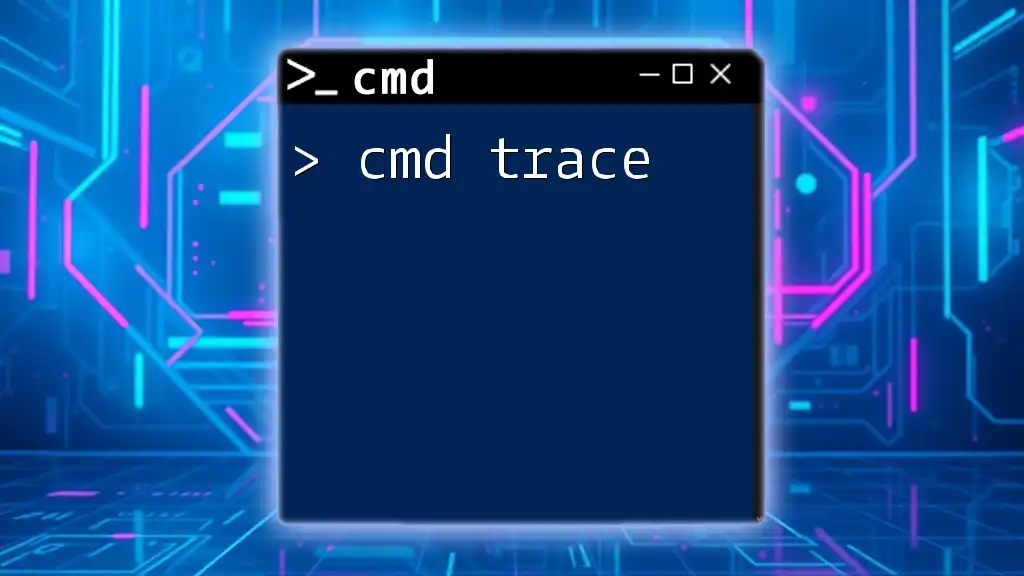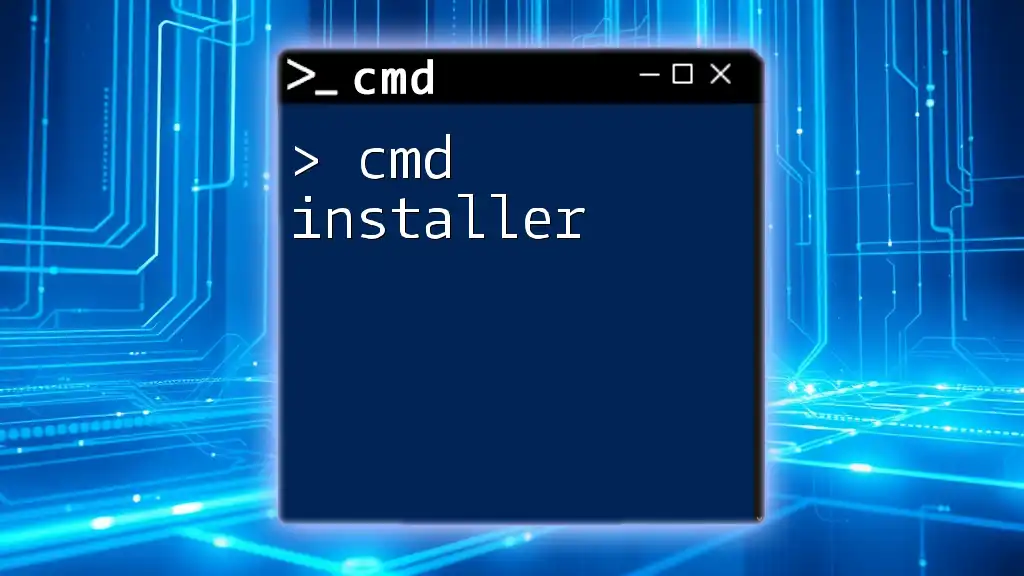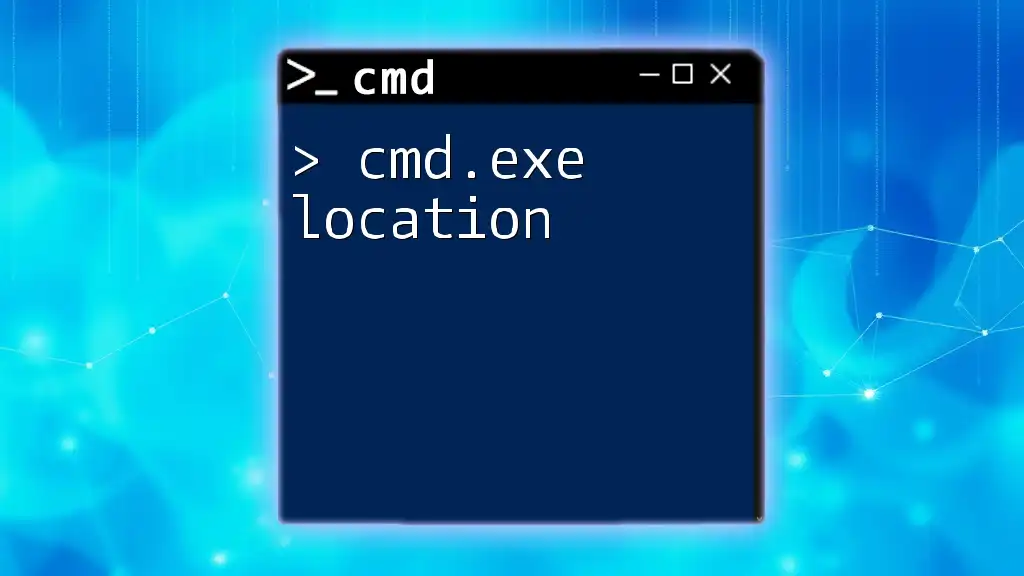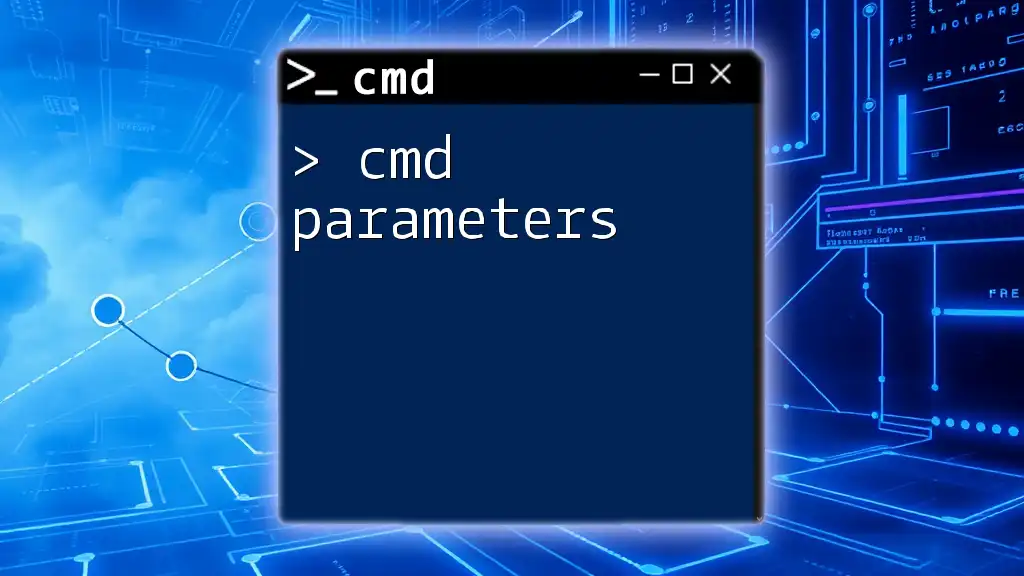To erase a file using cmd commands, you can use the `del` command followed by the file path.
del C:\path\to\your\file.txt
Understanding CMD File Deletion
What is CMD?
Command Prompt, often referred to as CMD, is a command-line interpreter included in Windows operating systems. It allows users to execute commands to perform a variety of tasks, from managing files to troubleshooting system issues. Understanding CMD is crucial for those who want to harness the full power of their operating system, particularly when it comes to file management as it offers methods to interact with your files beyond the graphical user interface.
Importance of File Deletion
File deletion is a fundamental aspect of maintaining your computer's health and efficiency. Why might you need to delete files? Here are several reasons:
- Freeing up space: Regularly deleting unnecessary files can reclaim valuable disk space.
- Privacy concerns: Deleting sensitive information is essential for protecting your privacy.
- Organizational clarity: Removing old or unused files can help you maintain a tidy and organized filesystem.
However, it is important to note that improper file deletion can lead to data loss. Therefore, having a solid understanding of how to erase files through CMD is crucial.
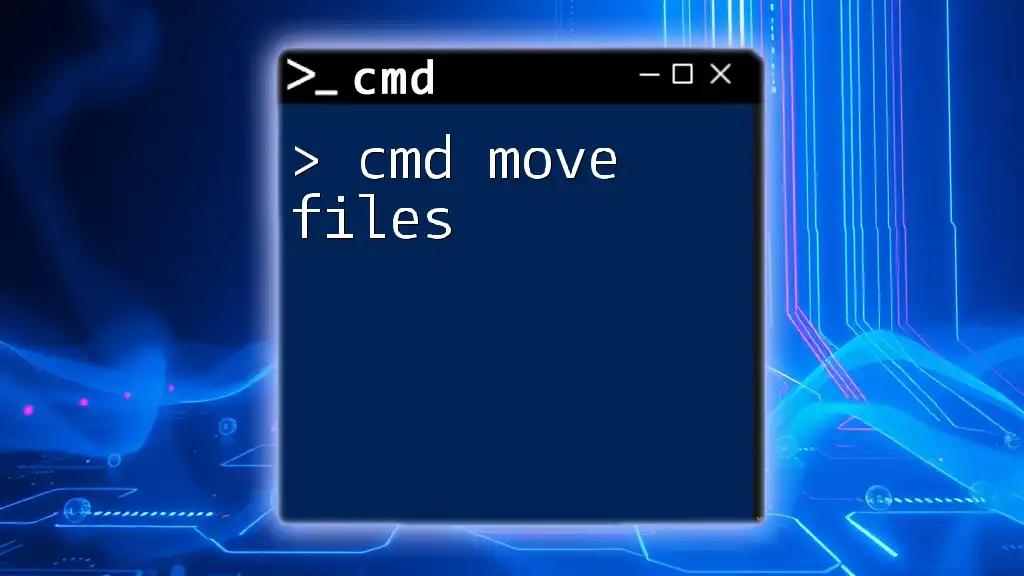
Basic Concepts of CMD File Deletion
Command Syntax for File Deletion
When it comes to deleting files using CMD, understanding the command syntax is essential. The general format for the delete command is:
DEL [options] [file path]
Common Command Options
Here are some commonly used options that can enhance the functionality of the delete command:
- `/P`: Prompts for confirmation before deleting each file. This is useful for preventing accidental deletions.
- `/F`: Forces the deletion of read-only files. This option is effective if you encounter permission issues.
- `/S`: Deletes specified files from all subdirectories. Use this option carefully, as it can delete multiple files at once.
- `/Q`: Quiet mode; suppresses the confirmation prompt. It can be risky, as it allows you to delete files without a prompt.

Steps to Erase a File Using CMD
Opening Command Prompt
Before you can delete a file using CMD, you need to open the Command Prompt. There are a couple of straightforward methods to do this:
- Option 1: Type “cmd” in the Windows Search Bar and hit Enter. This opens the command window.
- Option 2: Press `Windows Key + R`, type `cmd`, and click on OK.
Deleting a File with CMD
To delete a file using CMD, you simply need to use the `DEL` command followed by the file's path. Here’s a basic example:
DEL "C:\path\to\your\file.txt"
Important: When specifying file paths that contain spaces, always enclose the path in quotes to avoid errors.
Examples of Deleting Files
Example 1: Basic File Deletion
If you want to delete a file named “example.txt” located in your Documents folder, you would execute the command:
DEL "C:\Users\YourUsername\Documents\example.txt"
This command will permanently delete the specified file, so it’s essential to ensure you have selected the correct file.
Example 2: Deleting Multiple Files
If you want to delete all `.txt` files in the "Documents" directory, you can use a wildcard with the delete command:
DEL "C:\Users\YourUsername\Documents\*.txt"
The `*` wildcard matches all files with the `.txt` extension, effectively deleting them in one go. Use this command with caution; it may permanently remove multiple files without any confirmation.
Example 3: Deleting a Protected File
To delete a read-only file named “protected.txt”, you would use the `/F` option to force the deletion:
DEL /F "C:\Users\YourUsername\Documents\protected.txt"
If the file is protected due to its attributes, this command will remove those restrictions and allow deletion.

Handling Errors During Deletion
Common Error Messages
While using CMD to delete files, you may encounter some common error messages:
- "Access Denied": This typically occurs when you lack the necessary permissions to delete the file.
- "File Not Found": This indicates that the specified file path is incorrect or the file does not exist.
Solutions to Common Deletion Errors
To address these errors effectively, consider the following solutions:
- Running CMD as an Administrator: Right-click on the CMD icon and select “Run as Administrator.” This gives you elevated permissions, which can resolve many access issues.
- Verifying the Specified File Path: Ensure that the path you entered is correct, checking for any typos or incorrect directory names.

Best Practices for File Deletion Using CMD
Always Double-Check File Path
Before executing a delete command, it’s crucial to confirm that you are targeting the correct file. Accidentally deleting the wrong file can have serious consequences.
Utilizing the `/P` Option for Caution
To avoid unintentional deletions, consider using the `/P` option, which prompts you to confirm each deletion:
DEL /P "C:\Users\YourUsername\Documents\example.txt"
This command will request confirmation before proceeding with the deletion.
Regular Maintenance and Reviews
Incorporating regular checks and deletions of unnecessary files can significantly optimize your hard drive’s performance and prevent clutter. This practice is especially useful for keeping your system organized.
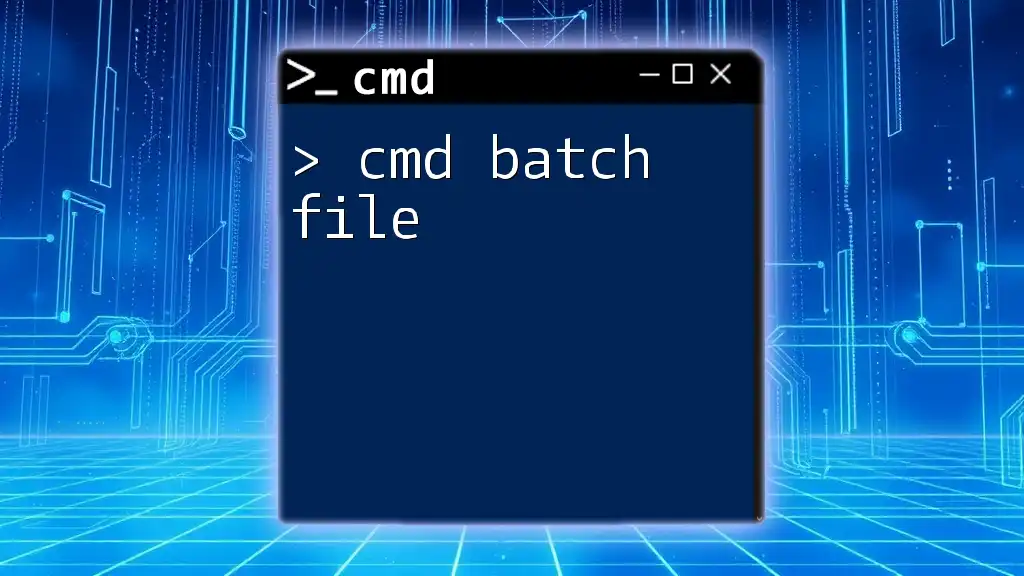
Conclusion
Knowing how to use CMD for file deletion, such as with the cmd erase file command, enhances your ability to manage your computer and maintain an organized workspace. It’s essential to familiarize yourself with the commands and options available to safely and efficiently delete files. Practice the commands discussed to build your proficiency and confidence in using Command Prompt for file management tasks.
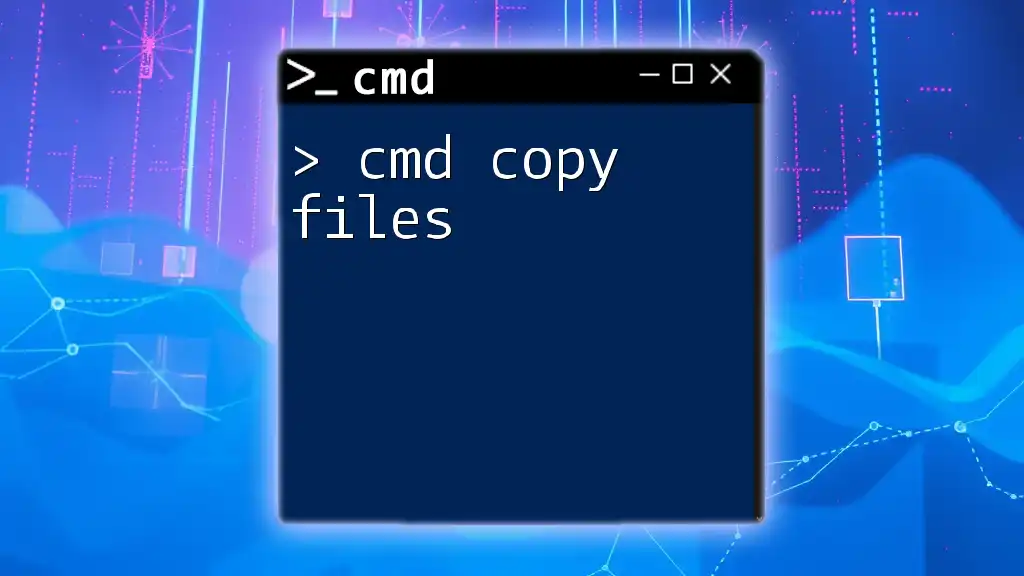
Additional Resources
For those looking to deepen their understanding of CMD and file management, many resources and tutorials are available online. Consider exploring documentation or forums to discover more about CMD commands and their uses.
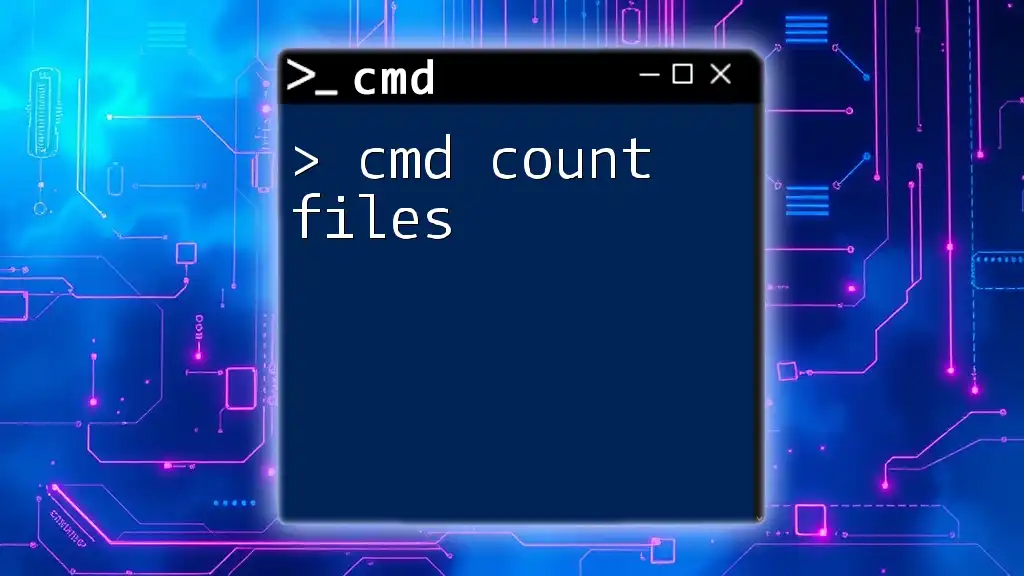
Call to Action
Ready to take your CMD skills to the next level? Sign up for our CMD training courses to learn more about this powerful tool and its many capabilities! Feel free to reach out with any questions or topics you'd like us to cover in future posts.

